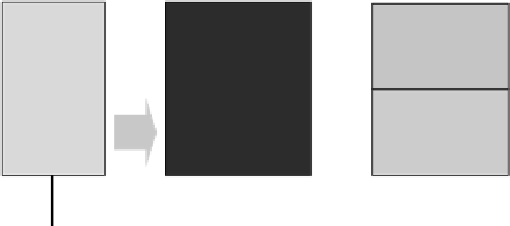Image Processing Reference
In-Depth Information
The third problem (robustness) can be faced in several ways. Whenever feasible, a proper selection
and placement of antennas is envisaged, possibly by exploiting antenna diversity. Purchasing APs and
adapterswithremovableantennasisotenagoodidea,asthispermitsboostingthestrengthofsignals
by replacing the built-in omnidirectional antenna with a high-gain or directional one. Moreover,
wireless range extenders can be used to deal with the problem of dead spots (areas with no or weak
reception)—even though setting up such devices in a proper way is not always straightforward.
Inthecasethisisnotenough,leakywaveantennas[]canbeusedtoensurereliablecom-
munication over radio links. The drawback, in this case, is the need to deploy the leaky cable
infrastructure, which makes it a non-universal solution. Usually, such an arrangement is adopted
when the equipment includes some parts moving on fixed paths, to avoid cable wear and strain.
As an alternative, if true mobility is required, devices operating in the GHz band (IEEE .a)
can be adopted as a satisfactory choice []. In this way, in fact, interferences with other devices
(mobile phones, Bluetooth-enabled equipment, notebooks with wireless connections, and so on)
operating in the standard (and already jammed) . GHz ISM band are avoided, hence achieving
a better signal-to-noise ratio and, consequently, a reduced error rate on the radio link.
26.4 IEEE 802.11-Based Extensions: Fieldbuses
Typically, the transmission protocols adopted by fieldbuses are noticeably different from those
employed in wireless networks, at all levels of the communication stack. For example, to the best of
our knowledge, random access techniques typical of WLANs are not employed in any fieldbus net-
work (they are sometimes used in building automation networks, which are characterized by relaxed
timing constraints). Other problems may arise concerning either the payload size of frames or the
address space, both of which are typically quite small in real-world fieldbuses (few tens/hundreds of
bytes/nodes, respectively).
As a consequence, wireless extensions of fieldbuses have to be implemented mainly at the appli-
cation layer, that is, through gateways. However, some remarkable exceptions exist: DeviceNet, for
instance, ensures interoperability with all networks based on the CIP protocol, thanks to its native
routing techniques that allow, in principle, the implementation of extensions operating below the
application layer (i.e., through direct routing of CIP messages).
26.4.1 Extensions of Profibus DP
A gateway able to extend Profibus DP may be directly implemented on a master station as shown
in Figure .. The master has to be equipped with an IEEE . board and suitable code has to
Gateway (Profibus DP master station)
Input
buffers
Gateway
code
(protocol
converter)
Wireless
protocol
stack
DP
protocol
stack
IEEE
802.11
Output
buffers
Profibus DP
FIGURE .
Gateway for Profibus DP with proxy functionality.












